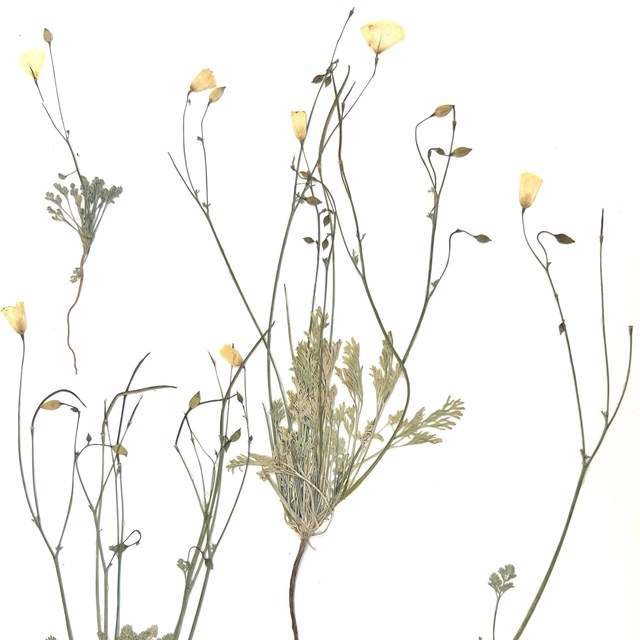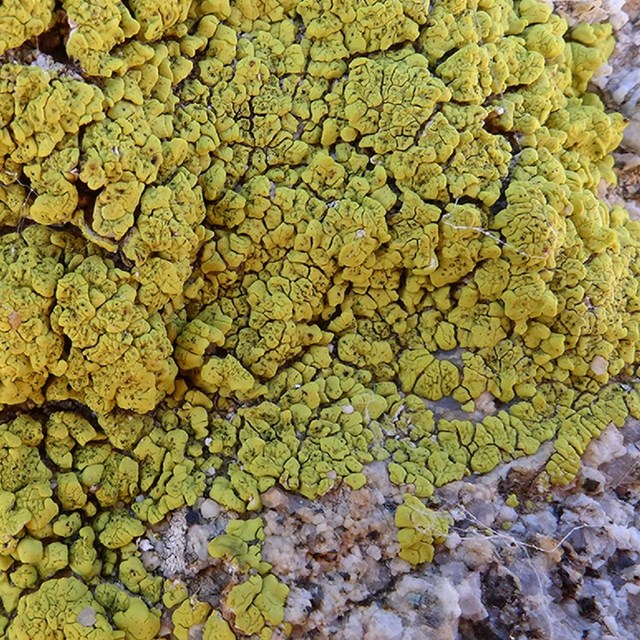A World of PlantsJoshua Tree is renowned for its plant diversity—there are nearly 800 species of vascular plants found here. Nearly half of these are annual plants, like many of the wildflowers that bloom in spring. From desert lavender and creosote to palm trees and pine trees, the park has a spectacular number of trees and shrubs. Shrub assemblages here are among the most diverse vegetation types in North America. Joshua Tree is also known for its numerous species of cacti and rare plants. The park is home to many species of ferns, mosses, and liverworts—also known as bryophytes. Many species of lichens can easily be found growing on the famous rock formations of the park. The diversity of the plant life found in Joshua Tree National Park provides ample opportunities for study and enjoyment. The park's herbarium documents nearly all of the plants found here. The herbarium's records are available to search online. With a spectacular diversity of plants and plant communities, it's no wonder the original name proposed for this area in 1930 was Desert Plants National Park! Different Deserts, Different VegetationJoshua Tree is home to two deserts: the Colorado Desert and the Mojave Desert. These areas are occupied by different combinations of vegetation. The Colorado Desert, a western extension of the vast Sonoran Desert, occupies the southern and eastern parts of the park. It is characterized by stands of ocotillo plants, ironwood trees, palo verde trees, and teddy bear cholla cactus. The southern boundary of the Mojave Desert passes through the park. It is the habitat of the park’s namesake: the Joshua tree (Yucca brevifolia). Extensive stands of this peculiar looking plant are located in the western half of the park. The park has a third primary ecosystem located in the westernmost part of the park above 4,000 feet (1,220 meters). The Little San Bernardino Mountains provide habitat for a community of California juniper, Muller’s oak, and pinyon pine. Threats to VegetationThe native vegetation communities at Joshua Tree are threatened by a variety of stressors. Urban expansion around the park adds to habitat fragmentation and the increased threat of invasive plants. Elevated soil nitrogen is increasing non-native grasses at the expense of native vegetation. Non-native plants change plant community composition and diversity. They also decrease the availability of water and can increase fuel loads and the risk of a fire. Increased coverage of grasses can increase fire size, frequency, and intensity. Many native plant species are not adapted to fire, and recovery is slow to nonexistent. Park staff estimates that invasive plants exist throughout most of the park. There are also invasive insect pests, such as tree-boring beetles, that could enter the park from the transport of firewood. The threat of invasive plants will likely increase from the cumulative effect of several other resource stressors: increased boundary encroachment, regional development, climate change, and social trailing vectors. Climate change compounds the effects of most stressors on native vegetation. Increased mortality of Joshua trees, pinyon pine, and other sensitive vegetation in the park is expected with a hotter and drier climate. Learn more about the effects of climate change on Joshua Tree. |
Last updated: June 3, 2025








